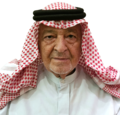Throughout history, Arabia has been a crossroads of civilization. Most notably on the Silk Road and Incense Road, much trade passed through Arabia. The well of Zamzam was also an important station for traders.
Ideally situated between Africa, Europe and Asia, Arabia has continued to be a hub for travelers of all kinds.
The annual Hajj organized by Saudi Arabia’s authorities is one of the world’s largest gatherings, annually welcoming 2 to 3 million Muslims for at least four days. This melting pot represents the 2 billion Muslims whose devotion centers on Makkah in the Kingdom.
The diversity of pilgrims during the Hajj in Saudi Arabia reflects the community’s makeup worldwide. Their devotion goes back to Abraham, the father of all believers in the three great monotheistic faiths from the Middle East. As Muslims enter Makkah’s grand mosque and see the Kaaba, they pray and bow in gratitude to Abraham, who is considered to have built the first house for believers.
Around the world too, hundreds of millions of Muslims turn, literally at every hour of the day, toward Makkah. There is no equal for this focus on one common point of reference for people of such different origins and ethnicities. Saudi Arabia counts this attention not in millions of dollars as America does Superbowl viewers, but in fellowship, goodwill and shared beliefs.
The Western media has relayed much criticism recently of the 1,300 deaths that occurred in blistering heat during the pilgrimage to Makkah. Every one of these deaths is tragic, but with nearly 2 million pilgrims performing the rituals in temperatures of 50 C — and especially with a large number of unregistered pilgrims trying to circumvent the safety rules put in place by the authorities — it was impossible to prevent some regrettable accidents.
Saudi Arabia has spent billions of dollars on hugely impressive infrastructure for the Hajj, applauded by leaders from around the world. This includes transport, tents, cooling technologies, health services, food, water and sanitation for 2 million pilgrims, all provided free of charge. It is a truly massive endeavor as pilgrims, resembling a sea of white, accomplish their religious duty in Mina, Arafat, Muzdalifa and Makkah.
There are literally hundreds of thousands of volunteers and staff members taking care of pilgrims, providing everything from transportation and healthcare to communication and supervision services. On the health front alone this year, staff at 189 hospitals, health centers and mobile clinics performed 465,000 procedures, including 141,000 for people who were unauthorized to perform Hajj.
There were over 30,000 ambulance services, 95 air ambulance operations, 28 open-heart surgeries, 720 cardiac catheterizations and more than 1,169 dialysis patients treated. Just imagine handling 3 million visitors for a four-day festival somewhere in Europe or the US every year. It seems an almost impossible task, let alone under 50 C heat in the desert. Every year lessons are learned but this task, which all Saudi Arabians take so seriously, is an incredible feat in itself.
When the pilgrims have returned home, we walk around the streets of our cities marveling at the incredible tapestry created by the people who have flocked to the country to make their lives here. There is no discrimination, with people from all continents sharing their cultures and their cuisines.
Saudi Arabia is certainly a true melting pot of the world, which is reflected in a fusion of cultures that has energized millions.
- Hassan bin Youssef Yassin worked closely with Saudi Arabia’s petroleum ministers, Abdullah Tariki and Ahmed Zaki Yamani, from 1959-1967. He led the Saudi Information Office in Washington from 1972-1981 and served with the Arab League’s observer delegation to the UN from 1981-1983.











